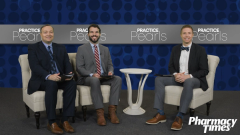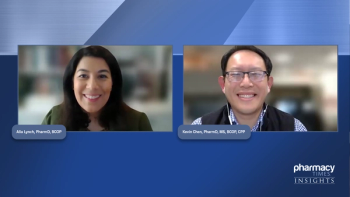
Navigating Adverse Events and Maximizing MM Treatment Adherence
The medical experts discuss strategies to achieve treatment adherence.
Ryan Haumschild, PharmD, MS, MBA: Pivoting a little bit, but building off that same point, we know that Dr [Larry] Anderson is working very hard to get patients on therapy. A lot of times pharmacist counseling and having that motivation for therapy and adherence plays an important role. Dr Hinojosa, I know that we see great results in clinical trials, but if a patient doesn’t take it right, that doesn’t always translate to the real world. You play such an important role not only in the therapeutic recommendation but the role you play in counseling and giving patient-specific feedback. If you could characterize that a little bit, when you’re going through a recommendation or counseling session, how do you counsel patients on the importance of adherence, and even the importance of some of the adverse effects that might come with their therapy and them letting know sooner so you can make a dose adjustment or dose holiday, so they don’t have to abandon therapy altogether? Talk us through your approach.
Gabe Hinojosa, PharmD, BCOP: Absolutely. Again, the favorite part of my job is getting to build those connections with the patients and make sure that they’re well educated, and their family members are well educated on why they’re receiving certain medications, the sequencing and logistics of taking these medications or coming into the clinic to receive the medications, how each medication individually works, and how they work together as a unit in a combination and then also looking at the toxicities of each drug individually. I always find that it is best to start by walking them through the regimen as a whole from a logistic standpoint. When we talk about compliance, the first step is knowing how and when to take each of the medications. I like to walk the patient through a treatment calendar that outlines both their active therapy as well as some supportive care medications that I need them to take at home on specific dates and times. If I need them to take a montelukast acid before they come in for a CD38 antibody, make sure they understand why that needs to be done, and that there’s a reminder on their calendar to take it this specific night before they come in. So really going through that calendar. I try to focus just on the first cycle during that point, just so that the education session does not become overwhelming. But once I feel the patient and their family have a good grasp on what that first cycle looks like, we begin the discussion with, while this may seem overwhelming now we can see how these changes may happen as you progress into your maintenance therapy or consolidation therapy. Once everyone is on the same page and in agreement with the logistics and how to take it, it’s really when we focus on how the medications work. I feel like that’s really what gets the patient to buy-in when they hear specifically how each of these drugs is working and how they’re working together for their specific disease state. That’s when you see maybe that glow or excitement in the patient that it’s not all doom and gloom and this is going to be a good choice for them. I try to walk through each specific medication, and we have plenty of great resources as pharmacists through organizations, such as OncoLink or Chemocare and many others, that make drug-specific patient handouts that we can use to guide that education session and also serve as a physical copy for the patient and their family to review when they get home in case they don’t remember everything that we discussed. So really getting it into terms that they can understand and relay, while they may not know what a proteasome is and the importance of inhibiting it, when you break it down to this is the trash man coming to your house. This proteasome is cleaning the trash out for those cells, and when we stop that from happening, this cell becomes overwhelmed with this buildup of byproduct and trash and eventually is uninhabitable and can no longer function and ultimately dies. That’s the mechanism and method of killing that cell. You look at drugs that are stimulating the immune system to be more responsive toward certain cells and act against their cancer. You look at medications like dexamethasone that are active against the myeloma cells but are also going to serve a purpose from a supportive care standpoint, maybe to prevent infusion reactions, and decrease delayed nausea that they may have after certain IV [intravenous] therapies. Explaining their treatment and getting patient buy-in is very important. One of the most important but not always the most fun part of the job is realistically explaining toxicities. I feel that this is a big benefit to the patient and really can improve response to therapy and the overall success that that regimen is going to have because, as you said, when they know what specific toxicities to look for, they can report them sooner. So something that they may have put off for weeks or months could have turned into a grade 3 or [grade] 4 reactions that now precludes them from receiving that treatment again. But if they’re educated and they know what to do look for, they can monitor and call us immediately when it’s a grade 1 and we can give them instructions on what to do, how to manage these toxicities, and as you said, potentially reduce doses or use other strategies to maintain that and minimize that toxicity so they can continue treatment.
Ryan Haumschild, PharmD, MS, MBA: Excellent. I really liked the way you broke it down. Even giving visuals to patients because I think the more they’re educated, the more they can get that motivation for therapy.
Transcript edited for clarity.
Newsletter
Stay informed on drug updates, treatment guidelines, and pharmacy practice trends—subscribe to Pharmacy Times for weekly clinical insights.



